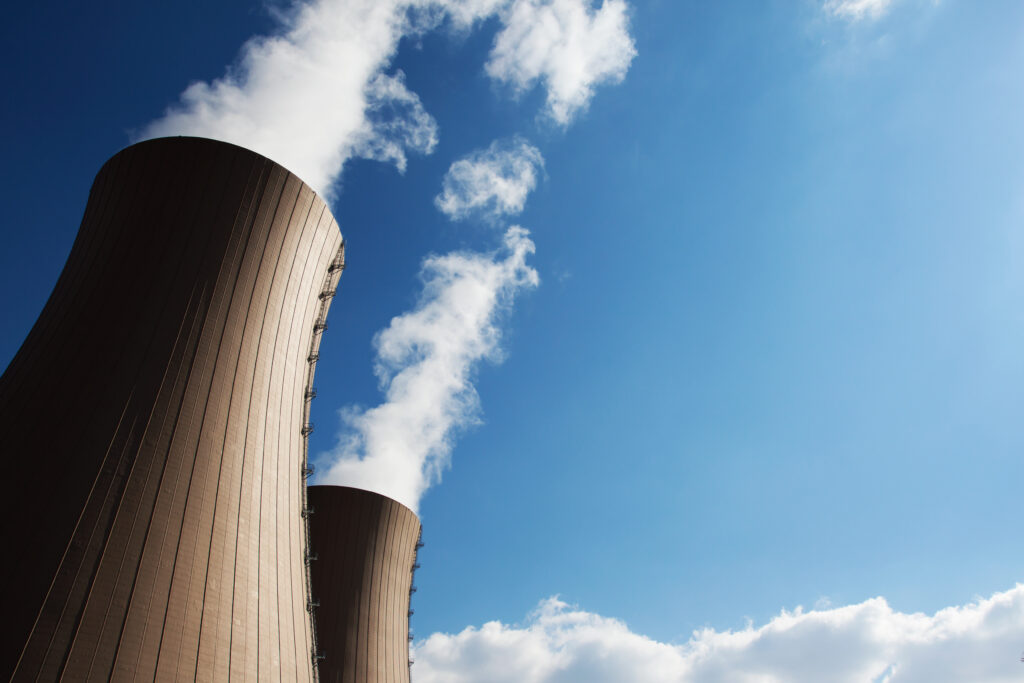Nuclear power has long been a critical component of the U.S.’s energy portfolio. It provides a reliable and relatively low-emission source of electricity. However, as concerns about climate change and the need for clean energy continue to grow, nuclear power remains a topic of debate. The Palo Verde Generating Station is the largest nuclear power plant in Arizona. It’s a significant contributor to the region’s energy supply. This facility plays a crucial role in meeting the Southwest’s electricity demands. It also serves as an example of how nuclear power can be harnessed effectively and responsibly.
This article explores the many facets of the Palo Verde Generating Station, including its history and technical specifications. It also delves into the station’s environmental impact and the unique ecosystem that surrounds it.
Palo Verde Generating Station: An Overview
The plant is located about 45 miles west of Phoenix, Arizona. It is a testament to human engineering and the potential of nuclear power.
As the largest nuclear power plant in the U.S., it provides electricity to millions of people.
Location and Accessibility

The Palo Verde Generating Station is nestled in the desert landscape of Maricopa County.
©Vince Schmidt/Shutterstock.com
The Palo Verde Generating Station is nestled in the desert landscape of Maricopa County. It is strategically situated to minimize its impact on densely populated areas, while still being accessible.
The plant is connected to major roadways, allowing for the efficient transportation of personnel, equipment, and materials.
Additionally, its remote location reduces potential safety risks to the surrounding communities, a key consideration for any large-scale industrial facility.
Energy Output and Technical Specifications
The Palo Verde Generating Station houses three pressurized water reactors (PWRs). Together, these boast a net generating capacity of approximately 3,937 megawatts electric (MWe).
This impressive output makes it the largest nuclear power plant in the country. It’s also one of the top electricity producers among all power plants in the U.S.
Each reactor employs a containment structure designed to withstand high pressures and temperatures. These ensure the plant can operate safely and reliably.
The electricity is distributed across a vast network, providing power to millions in Arizona, California, New Mexico, Nevada, and Texas.
This wide distribution highlights the importance of maintaining a stable and reliable energy supply, particularly during periods of peak demand.
History
With its impressive scale and capacity, the Palo Verde Generating Station has a rich history spanning over four decades.
From its initial concept in the early 1970s to its ongoing operation, the plant has played a critical role in meeting the energy demands of the Southwest.
Background and Context
The origins of the Palo Verde Generating Station can be traced back to the early 1970s. The Southwest was experiencing rapid population growth and increasing electricity demand.
A consortium of utilities recognized the need for a stable, reliable, and sustainable energy source. This group, led by Arizona Public Service (APS), began exploring the potential of nuclear power as a solution.
After careful evaluation of various energy sources, nuclear power was chosen. Its selection was due to its high efficiency, low greenhouse gas emissions, and ability to produce large amounts of electricity.
Construction Timeline
Construction of the Palo Verde Generating Station began in 1976, marking the beginning of a complex and ambitious engineering project.
Over the next decade, thousands of workers contributed to the development of the site. They overcame various challenges, including harsh desert environment and the need for stringent safety measures.
The first reactor, Unit 1, achieved criticality in 1985 and began commercial operation in 1986. Unit 2 followed in 1987 and Unit 3 came in 1988.
Upon completion, the plant became the largest nuclear power facility in the U.S.
Significant Events and Accomplishments Since the Operation
Since its inauguration, the Palo Verde Generating Station has achieved numerous milestones and accomplishments.
The plant has consistently ranked among the top electricity producers in the country. It has been recognized for its operational excellence and safety performance.
The plant has undergone regular maintenance and upgrades throughout its history to ensure its continued reliability and efficiency. Some of these improvements include:
- Implementing advanced digital controls
- Cybersecurity enhancements
- Power uprates to increase output capacity
The Evolving Role of Nuclear Power in Arizona and the Southwest
Over the years, the Palo Verde Generating Station has played a pivotal role in the energy landscape of the Southwest.
The plant’s consistent and reliable output has contributed significantly to the region’s energy supply. It has helped to reduce dependence on fossil fuels and support the transition to a more sustainable energy mix.
The conversation surrounding climate change and clean energy continues to evolve. However, the Palo Verde plant remains an essential part of the region’s energy strategy. It is a testament to the potential of nuclear power.
Human Population Around the Plant

The presence of the Palo Verde Generating Station has a significant impact on local economies.
©Wlad74/Shutterstock.com
The communities around the Palo Verde Generating Station are shaped by their proximity to the power plant. This plays a significant role in the local economy and daily life.
The Proximity of Communities to the Power Plant
The plant is located in a relatively sparsely populated area of Arizona. The nearest communities are small towns and cities, such as Tonopah, Buckeye, and Wintersburg.
The plant is approximately 50 miles west of Phoenix, the state capital and a major population center. This distance helps minimize the potential impact of the power plant on densely populated areas.
Impact of the Power Plant on Local Economies
The presence of the Palo Verde Generating Station has a significant impact on local economies. It provides a stable source of well-paying jobs and contributes to the economic development of the region.
The power plant directly employs hundreds of workers in various capacities, from engineers and technicians to administrative and support staff. Additionally, the plant indirectly supports thousands of jobs in related industries, such as construction, transportation, and the supply chain. Taxes generated by the plant also contribute to local and state government revenue, supporting public services and infrastructure development.
Public Perception of the Power Plant
The public perception of the Palo Verde Generating Station is generally positive. The local population recognizes the importance of the power plant in providing clean, reliable energy for the region.
The plant’s operators maintain open lines of communication with the public. They also engage in ongoing efforts to educate the community about the benefits and safety of nuclear power.
While concerns about safety and environmental impacts exist, the plant has a strong track record of compliance with safety and environmental regulations, helping to bolster public confidence in its operations.
Employment Opportunities and Community Involvement
The Palo Verde Generating Station offers many employment opportunities for local residents, ranging from skilled technical positions to entry-level jobs.
The plant is committed to investing in the local workforce, offering training and development programs to help employees advance their careers.
The power plant also plays an active role in community engagement. It supports local events and initiatives, partners with educational institutions, and sponsors programs that promote environmental stewardship and community development.
Seismic Risk
Understanding the seismic risk associated with the Palo Verde Generating Station is key to ensuring the safety and reliability of the plant in the face of potential natural disasters.
Overview of Seismic Activity in the Region
The region surrounding the Palo Verde Generating Station is considered to have a relatively low seismic risk compared to other parts of the U.S.
While Arizona is not immune to earthquakes, the frequency and intensity of seismic events in the area are generally lower than in other seismically active regions, such as California.
But it’s essential to consider the potential for seismic events when operating a facility like a nuclear power plant.
Measures Taken by the Power Plant to Mitigate Seismic Risk
The Palo Verde Generating Station has been designed and constructed with seismic safety in mind. It incorporates features that help ensure its structural integrity in the event of an earthquake. Key components of the plant’s seismic safety measures include:
- Robust building designs that can withstand ground shaking
- Reinforcement of critical systems and components
- Ongoing monitoring and inspection of the plant’s structures to identify and address potential vulnerabilities
Importance of Emergency Preparedness and Response
Effective emergency preparedness and response plans are crucial for managing the potential consequences of a seismic event.
The plant’s operators work closely with local, state, and federal agencies to develop and maintain comprehensive emergency response plans. These include provisions for evacuation, communication, and coordination with emergency responders.
Regular drills ensure that plant personnel and community members are familiar with the procedures in the event of an emergency. These minimize the potential for confusion and delays in response.
Wildlife Around Palo Verde Generating Station

The region supports a variety of reptiles and birds, including the roadrunner.
©Dennis W Donohue/Shutterstock.com
The diverse wildlife around the station is an essential component of the unique desert ecosystem in which the plant operates.
Common Animal Species
The desert surrounding the Palo Verde Generating Station is home to various animal species adapted to the harsh conditions.
Some of the most common mammals in the area include jackrabbits, coyotes, desert bighorn sheep, and various species of rodents.
The region also supports a variety of reptiles, such as rattlesnakes, Gila monsters, and desert tortoises. There are also numerous bird species, including roadrunners, cactus wrens, and birds of prey like hawks and owls. Additionally, the area is home to countless insects and arachnids that play essential roles in the desert ecosystem.
Adaptations of Desert Wildlife
Desert wildlife has evolved a range of adaptations to survive in arid conditions.
Many animals have developed physical traits that help them withstand extreme temperatures. These include light-colored fur or feathers that reflect sunlight and specialized body structures that minimize heat absorption.
Behavioral adaptations include being active during cooler parts of the day, seeking shelter from the sun, and conserving water through efficient metabolism and water collection strategies.
Interactions Between Wildlife and the Power Plant
The Palo Verde Generating Station takes its responsibility towards local wildlife seriously. It aims to minimize the impact of its operations on the surrounding ecosystem.
The plant’s innovative water management system creates a unique habitat that supports various plant and animal species. It uses treated wastewater for cooling purposes.
Additionally, the power plant’s property includes large areas of undeveloped land. These serve as important habitats and wildlife corridors for local species.
The plant also implements measures to minimize its impact on wildlife during construction, maintenance, and other operations.
Conservation Efforts for Native Animal Species
Protecting the diverse wildlife around the plant is crucial for maintaining the balance and health of the desert ecosystem.
The plant’s operators work closely with local and federal agencies to implement conservation efforts. These efforts include monitoring the impact of power plant operations on local wildlife, as well as managing invasive species. They also support habitat restoration projects that ensure the long-term survival of the unique fauna.
Key Takeaways
The Palo Verde Generating Station is critical to the energy infrastructure in Arizona and the Southwestern U.S. It provides clean, reliable, and affordable energy to millions of people. In addition, the power plant is in a unique desert ecosystem. This area is home to various plant and animal species adapted to the harsh conditions of the region.
The plant’s operators are committed to protecting and preserving the local environment. They implement innovative water management practices and support conservation efforts for native plant and animal species.
The Palo Verde Generating Station also plays a vital role in the local economy, providing stable, well-paying jobs and contributing to economic development in the region.
The photo featured at the top of this post is © Nostal6ie/Shutterstock.com
Thank you for reading! Have some feedback for us? Contact the AZ Animals editorial team.







